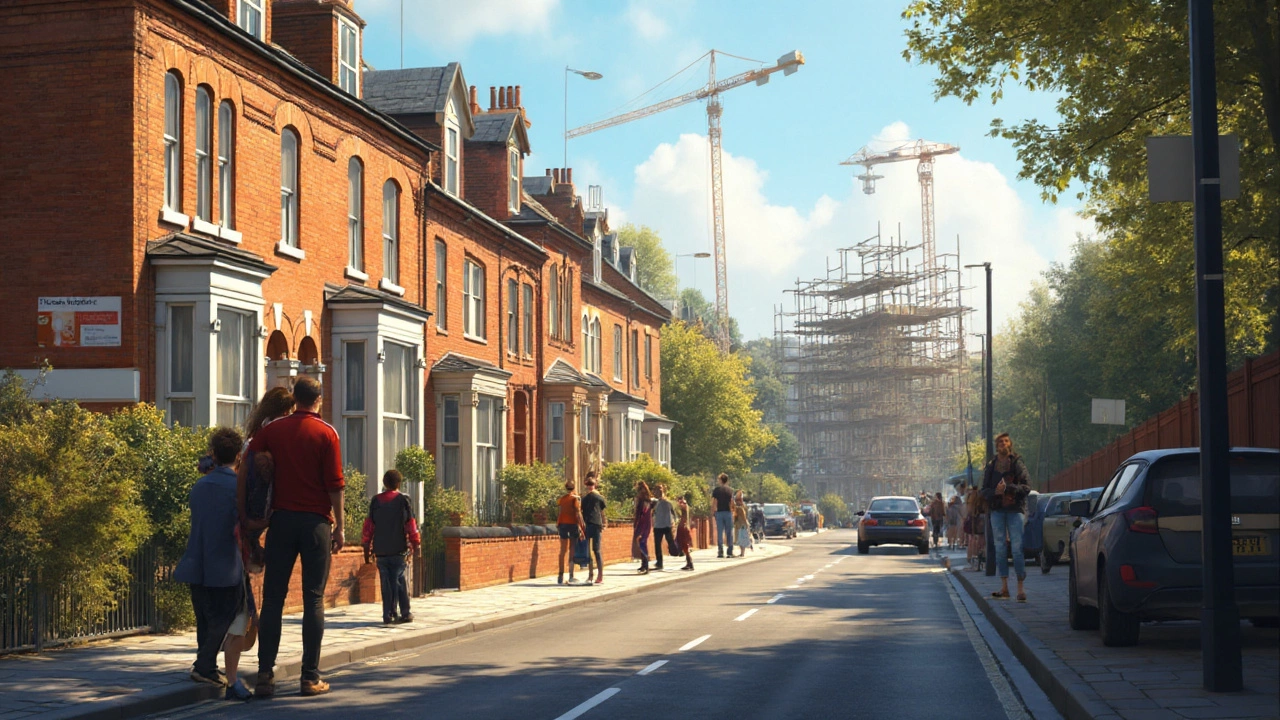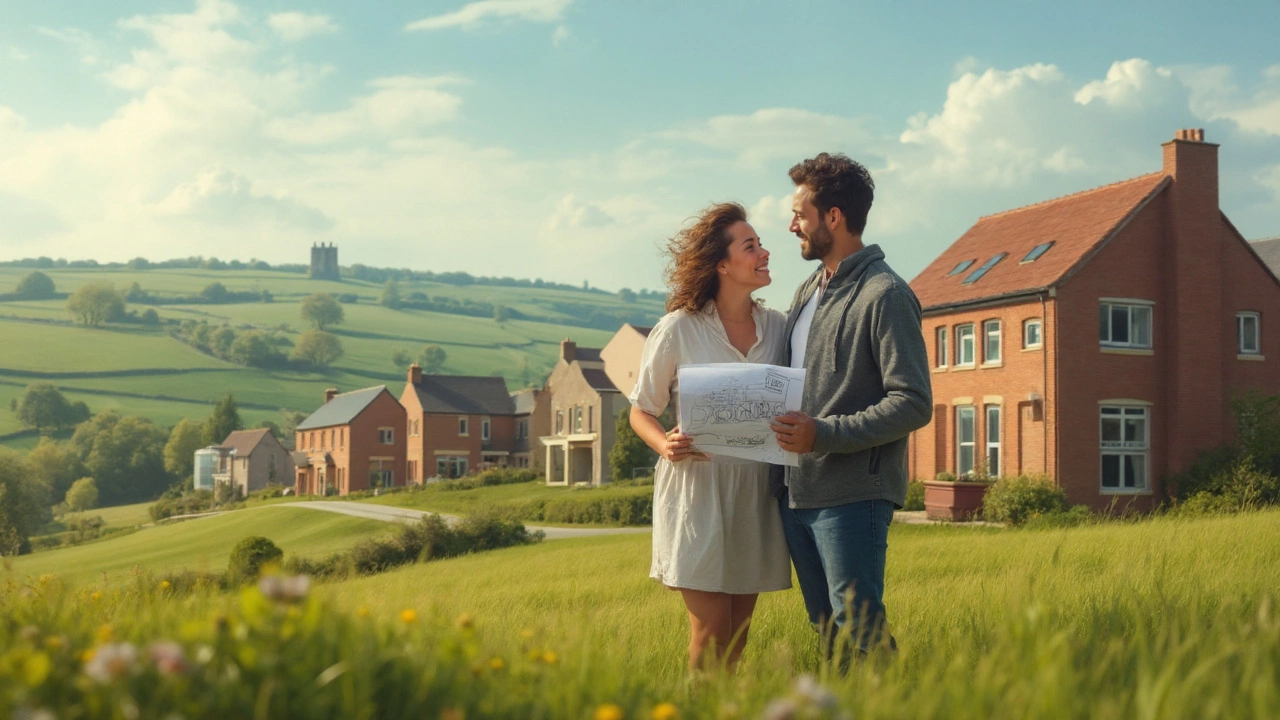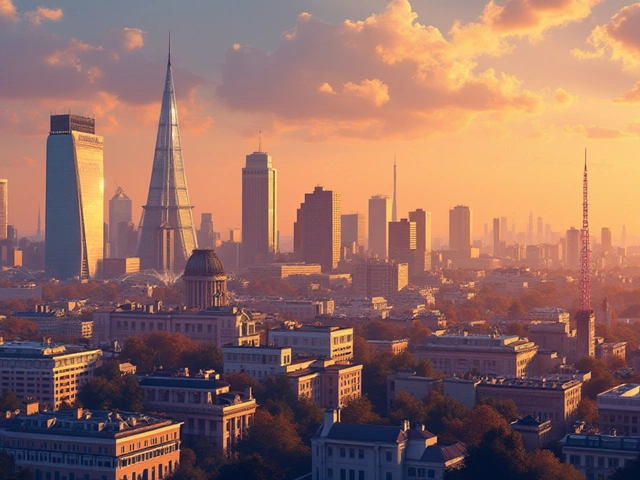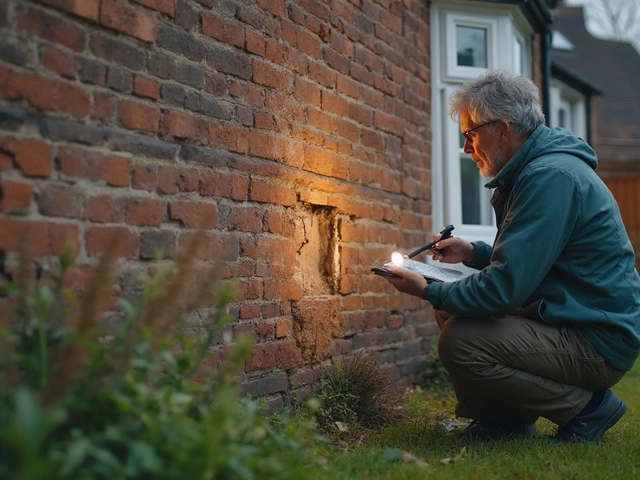Imagine walking through a house shaped completely by your own decisions—sunroom facing that golden southern light, sockets right where you want them, floors you picked out yourself. It’s hard to resist. But then comes the price tag. At the same time, you scroll past homes for sale and see how much they’re going for (and, let’s be real, how fast some of them get snapped up). It’s a weird moment in history: Upfront, home prices aren't looking friendly, but construction costs also seem to have a mind of their own. The real kick? In some areas, buying an existing home is way pricier than building from scratch, while, elsewhere, labor and material spikes make building feel like a money pit. Let’s pull the curtain back and get real: is it honestly cheaper to build than buy this year? And if so, where, why—and how do you avoid mistakes that blow up your budget?
The Actual Cost: Breaking Down Build vs Buy in 2025
The old wisdom used to be that building a house would cost you more, especially because it required upfront investment, design fees, and dealing with contractors. Fast forward to 2025, and that gap isn’t as clear. The median price for a new single-family house in June 2025 hit $467,000 (according to the U.S. Census Bureau), while the median price for existing homes sits just below that—around $442,000 as per the latest National Association of Realtors update. Sure, that might look close, but the difference hides in the details.
Building new almost always means you’re getting what you want, but the cost per square foot depends heavily on location, the land’s price, and just how wild your taste runs. In the Midwest, land is still cheaper and local materials keep new builds closer to $180 per square foot. In coastal cities or anywhere in California, buying land alone can eat your budget before you even break ground. There, builds can skyrocket past $400 per square foot—for mid-range homes! Meanwhile, the resale market in those same pricey areas has reached historic highs, and bidding wars are not rare. So, which is winning the cost race?
The big factors pushing build prices up lately: labor shortages, record-high lumber prices (yes, they’re still not back to pre-pandemic levels), and energy costs hiking delivery and production. Even wiring and HVAC have doubled in some states since 2022. On the flip side, older homes often scream for repairs—think aging roofs, outdated plumbing, or drafty windows. The National Association of Home Builders estimates buyers of existing homes spend an average $15,000 on repairs in their first 12 months. Factor that in and suddenly, the gap narrows or flips entirely.
| Median Cost (2025, USD) | Notes | |
|---|---|---|
| Building New | $467,000 | Varies by land and design |
| Buying Existing | $442,000 | May need repairs/renovation |
| Average Repairs (Existing) | $15,000 | First-year spend |
| Loan Rates (30-yr fixed) | 6.95% | As of August 2025 |
The bottom line: If you already own land, building might make sense, especially in less expensive markets. If land prices have shot up, or you want a move-in ready home, buying could be your wallet’s friend. But these numbers can’t include your own priorities—sometimes the value of not having that peeling ’70s wallpaper is worth a little extra.
Financing, Timing, and Unseen Costs: The Stuff Nobody Tells You
Money isn’t just about list prices or loan amounts—timing and extra costs can punch huge holes in any solid-looking budget. Let’s talk loans first. If you build, you’ll need a construction loan, which usually rolls into a traditional mortgage once the house is done. Construction loans are often higher in interest—think close to 8% in mid-2025—and require a larger down payment (20–25%). Meanwhile, straight-up home purchase loans hover around 7% for good credit. Not a massive gap, but over a few hundred grand, the interest adds up.
The build often comes with carrying costs: you pay for a place to live while your house is going up, which means double rent or juggling your old mortgage on top. Construction delays are the norm right now. According to Redfin, the average new build is running 3–5 months behind schedule in hot markets. That delay not only means more carrying costs but also exposes you to price hikes. Lumber, for instance, jumped 16% between January and May 2025 alone, and HVAC suppliers are still reporting backlogs.
Forgotten extras add up fast. Permitting is a nightmare in some areas—homeowners in Austin, Texas, waited an average of four months for basic permits this spring. Surveying, soil tests, city fees, and tap fees for water and sewer (some fast-growing suburbs charge $8,000+) don’t show up on glossy builder ads. If you want anything outside the builder’s basic package (say, a gas range, unique flooring, or a three-car garage), change orders can rack up. One local contractor told me, “Every upgrade comes with at least a 20% premium—so even minor tweaks break the original budget.”
But don’t forget about tax benefits. New builds usually come with better energy efficiency, which might snag you a federal tax credit of up to $5,000 under the 2025 Green Homes Act (just enacted this January). Energy bills on new constructions can stay hundreds lower than homes built before 2000. And warranties? Builders are now routinely giving 1–2 year bumper-to-bumper coverage, plus 10 years on structural issues. Not so for that 1970s split-level with creaky stairs and ancient pipes.

Quality, Customization, and Lifestyle: Beyond Just the Money
The numbers only tell part of the story. Anyone who’s lived through a bad DIY reno can tell you: lifestyle and peace of mind matter. Buying a home means less hassle up front, and you can usually move right in. But even after dropping $450,000, you might be the proud new owner of leaky skylights, musty carpet, or a kitchen that hasn’t seen an update since the Bush presidency. Renovation costs are wildcards. A national survey by the Home Improvement Research Institute found that 28% of new buyers spent over $25,000 updating their house in 2024–2025, not counting major structural fixes.
Customization is where building really shows off. Sun-soaked porches, private offices, EV charging setups—stuff you rarely find in the resale market but can design from scratch. Open floor plans and tech-ready layouts also make daily life easier and could up your home’s resale value. New homes come standard with smart thermostats, tankless water heaters, and maybe even solar panels. By contrast, retrofitting these into an existing home is costly and sometimes impossible (historic homes, for example, often can’t take rooftop panels without city headaches).
Here’s the funny part—some people crave the quirks of older homes: thick walls, established trees, mature neighborhoods, and quirky nooks. New subdivisions do not come with instantly tall shade trees or that midcentury charm you get in established neighborhoods. Ever dealt with Homeowners’ Associations (HOAs) in new developments? Prepare for strict rules, lawn inspections, and maybe monthly fees north of $200.
Sometimes, it’s not just about the house. Schools, commute times, and even walking distance to parks or cafes can trump the fresh-smell factor. New builds may be in further-flung areas unless you’ve got big-city money to drop on an infill lot. If you work from home—with fast fiber internet essential—older houses may fall short without upgrades. An October 2024 Pew Research Center poll showed 52% of buyers aged 35–54 put location and tech-readiness above all else, even cost.
"Homebuyers are redefining value—not just by square footage or finishes, but by flexibility and future-readiness," says Rachel McCann, senior analyst at the National Association of Home Builders.
Tactical Tips to Save Money (and Your Sanity) in 2025
So how do you decide—and save money once you do? Here’s what savvy buyers and builders are doing now. First up: Be brutal with your wish list. What is truly non-negotiable? Investigate less-flashy, up-and-coming neighborhoods instead of following the crowd. Land is often more affordable on the fringes, and some cities—like Indianapolis or Chattanooga—still offer bargain spots within a reasonable drive of the city center.
If building, negotiate EVERYTHING. Don’t take quoted prices at face value. Builders have more flexibility right now than you’d think, especially heading into the slower fall and winter seasons. Ask for discounts on upgrades, or see if they’ll throw in appliances—some are sitting on inventory from last year.
- Get multiple bids for labor, even if you’re using a general contractor.
- Arrange bulk pricing on flooring, lighting, or fixtures. Big-box stores and local supply yards will work with you, especially if you’re buying ahead.
- Look at pre-designed or modular builds. Custom doesn’t always mean expensive—efficient, repeatable floor plans can chop 10–20% off the cost versus starting from scratch on blueprints.
- If buying, pay extra for a top-notch home inspection. Shelling out a few hundred bucks upfront is way cheaper than missing an expensive hidden flaw. Question everything: roof, drainage, foundation, appliances, windows, and electrical. In hot markets, don’t waive inspections—no matter how much pressure you feel.
- Sharpen your timeline. Can you close during a less competitive season (late fall or early winter)? Sellers often drop prices by several percentage points as the market slows down just before the holidays.
- Investigate down payment assistance, green energy incentives, or city-level grants. 2025 is packed with pilot programs as cities try to attract new residents and cut energy use.
Try to avoid the big mistake: Underestimating "soft" costs like moving, temporary housing, or storage, which eat savings fast if you aren’t careful.
If you’re not sure which way to go, talk to a lender, a local Realtor, and someone who built a home in the last year (not your friend’s cousin who built during 2019’s weird market). Today’s numbers don’t lie, but the right answer still comes down to where you are, what you want, and how much risk you can live with. The *build vs buy* puzzle is trickier in 2025—but for those who do the homework and know the tradeoffs, both routes can still land you the roof you want over your head.





